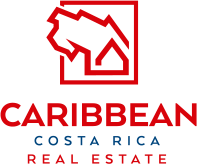2&3 Bedrooms New Homes in Punta Uva Arrecife With Permaculture Garden
Overview
Exciting to introduce this new project in Arrecife and Punta Uva at an affordable price.
This is a unique concept at about 4 minutes bike ride to Punta Uva, Arrecife beaches on the South Caribbean side of Costa Rica. The houses has been built consciously with the environment and all come with an edible permaculture garden included. The houses take about 4-5 months to build a 50% deposit is required to start the house and remaining 50% when home is completed.
There are three designs to choose from for each style.
Arrecife Punta Uva 1000m2 & 2/2 $309 000 USD
Arrecife Punta Uva 1000m2 & 3/2 $339 000 USD
Arrecife Punta Uva 1500m2 & 2/2 $369 000 USD
Arrecife Punta Uva 1500m2 & 3/2 $399 000 USD
These size lots provides you a lot of privacy and at the same time room to expand for a guest house or two guest houses. The land is large enough that owner is adding a nice edible garden with organic fruits and vegetables you can pick from your yard every day.
The property includes, the land, permaculture garden, pool, pool pump, well, well pump, laundry area,kitchen cabinets, AC units, closets. Furniture is not included with the house, our company can assist you in buying the furniture in town and we also work with local hardwood people that can build you nice wood furniture.
Here is some more information about the permaculture garden included with the home.
Your permaculture garden is a carefully thought-out and interconnected ecosystem that seeks to achieve ecological harmony and sustainability while minimizing the negative impacts on the environment.
It has a sustainable and ecologically conscious approach that aims to mimic natural ecosystems and promote self-sufficiency. It combines principles of ecology, organic farming, and landscape design to create a harmonious and regenerative environment. These are elements that you can find in your house garden:
•
• Biodiversity: Permaculture gardens are designed to maximize biodiversity. They include a wide variety of plants, trees, and shrubs, often with a focus on native species. This diversity not only supports a range of wildlife but also creates a more resilient and productive ecosystem. Permaculture gardens use polyculture, where different plant species are planted to create mutual benefits. This approach reduces the risk of pests and diseases and enhances soil fertility.
•
• Food Forests: A prominent feature of permaculture gardens is the incorporation of food forests. These are layered systems where taller trees provide shade and structure, while smaller plants and ground covers yield edible fruits, nuts, and other crops. Food forests are designed to require minimal maintenance while producing an abundance of food.
•
• Water Management: Permaculture gardens are designed with efficient water management in mind. Techniques like rainwater harvesting, swales, and contour planting are employed to capture, store, and distribute water to where it is needed, reducing the need for irrigation.
•
• Organic Practices: Chemical fertilizers and pesticides are avoided in permaculture gardens. Instead, they rely on composting, mulching, and other organic practices to improve soil health and nurture plants. Beneficial insects, birds, and other animals are encouraged to help control pests naturally, reducing the need for chemical interventions.
•
• Regenerative Practices: Permaculture gardens are designed to regenerate the land rather than deplete it. They emphasize building and improving the soil, so it becomes increasingly fertile over time.
•
• Sustainability: Permaculture gardens aim to be self-sustaining, providing a significant portion of the household’s food and other needs. They prioritize long-term sustainability over short-term convenience.
•
• Wildlife Habitats: Permaculture gardens create habitats for wildlife, from insects to birds and even larger animals. This supports pollination, pest control, and overall ecosystem health.
Among some of the plants you may find in your garden:
• Pineapple (Ananas or Piña): Costa Rica is a major exporter of pineapples, this bromeliad is a tropical staple and easy to grow.
• Banana (Banano or Plátano): Bananas are a common sight in Costa Rica and are used in various dishes. There are many kinds of bananas available from java blue to red banana, apple banana and grosmichel. Easy to grow.
• Papaya (Papaya): Papayas are popular and often served as a fruit, in fruit salads, cooked when green or in smoothies. Fast growing and producing all year round.
• Durian (Durian) a unique tropical fruit known for its distinctive and strong odor, despite this is known as the «the king of fruits.» The texture is creamy, and its indulging and rare flavor is a combination of sweet, nutty, and sometimes even hints of garlic or onion.
• Guava (Guayaba): Guavas are widely cultivated and used in juices, jams, and desserts. There is costarrican endemic sour variety called Cas.
• Passion Fruit (Maracuyá): Known for its unique flavor, passion fruit is used in drinks and desserts. Has a wonderful flower that attracts hummingbirds and butterflies.
• Starfruit (Carambola): Starfruit is used in salads and eaten as a refreshing snack.
• Guineo, Platano (Plantain or Cooking Banana): Plantains are used in various savory dishes in Costa Rican cuisine. When green boiled with beans, marinated in ceviche or caramelized fried when ripe.
• Jaboticaba (Guayabillo): A lesser-known sweet amazonian fruit, Jaboticaba is often used to make jellies and wines.
• Rambutan (Rambután): This exotic fruit is similar to lychee and has sweet and juicy flesh. Loved by kids for it gummybear like texture.
• Soursop (Guanábana): Soursop is known for its creamy, sweet, and slightly tangy flesh.
• Biriba (Rollinia deliciosa): a creamy sweet variety of anona native to the Amazon rainforest. Fast growing and easy to trim.
• Jackfruit (Jackfruit or Jaca): Jackfruit is used in savory dishes and has a meaty texture. This member of the Artocarpus family is famous for being the world’s biggest fruit with up to 100 pounds.
• Marang, Cempedak, Pedalai: all in the same family of Jackfruit, Artocarpus, they are known to be some of the most delicious and rare fruits in the world.
• Mangosteen (Mangostán): some of the most famous south eastern pacific asian fruits. It loves the tropical rainforest environment to grow.
• Guanabana (Soursop or Graviola): Guanabana is used in various culinary applications and is known for its health benefits.
• Pitahaya (Dragon Fruit or Pitaya): Pitahaya has a striking appearance and is often eaten fresh or used in smoothies.
• Cashew Apple (Marañón or Anacardo): The cashew apple is the fruit from which cashew nuts are derived. Also the fruit’s sweet flesh is a rarely known delicacy.
• Breadfruit (Breadfruit or Fruta de Pan): Breadfruit is a starchy fruit often roasted or fried in Costa Rican dishes.
• Zapotes (Sapotes): There are various types of sapote fruits, each with a unique flavor and texture. Mamey, Black sapote, Sonsapote, Nispero, Chicozapote etc.
• Mamon Chino (Rambutan or Litchi Nuts): Mamon Chino is a small, sweet fruit often enjoyed as a snack. Loved by children
• Cacao: known as the »food of the goods», chocolate tree is a shade loving low height tree perfect to grow in food forests under other fruit trees.
A great variety of medicinal, edible and aromatic herbs such as:
• Aloe Vera (Aloe barbadensis miller): Known for its soothing properties for skin conditions and burns.
• Peppermint (Mentha x piperita): Known as hierbabuena. Used for digestive issues and as a natural remedy for headaches.
• Snake plant or Mother-in-law’s tongue (Sansevieria trifasciata): Sansevieria is recognized for its air-purifying qualities. It can help remove toxins such as formaldehyde and benzene from indoor air, making it a beneficial addition to your home or office.
• Vanilla (Vanilla planifolia): Culinary delicacy that comes from a vine growing orchid. native to mexico and Central America, it’s a perfect low maintenance add to your edible garden
• Black pepper (Piper nigrum), is a tropical climbing vine that produces the black, white, green, and red peppercorns commonly used as spices and seasonings.
• Ginger (Zingiber officinale): Used for its anti-nausea and anti-inflammatory properties.
• Turmeric (Curcuma longa): Known for its anti-inflammatory and antioxidant properties.
• Juanilama (Lippia alba): Native to Costa Rica and Central America is a local verbein, soothing for stomach issues, delicious and romantic in teas. Bees and butterflies attracting
• Costa Rican Tilo (Justicia pectoralis): Used for its calming and mood-enhancing properties. Supports deep sleep and helps with insomnia.
As well as flowers for hummingbirds and butterflies will be adopted in the design also:
• Stachytarpheta (Rabo de zorro): In traditional medicine as anti-inflammatory and analgesic effects. The nectar-rich flowers of Stachytarpheta plants are valuable food sources for pollinators specially humming birds and can contribute to the diversity of local ecosystems.
• Heliconias, Calatheas, Costus spp. part of the banana family, commonly known as birds of paradise, ‘‘platanillas‘‘ y ‘‘cañas agrias‘‘, these beautiful blooming tropical plants are beneficial to all kinds of fauna, control grown humidity and provide privacy as living fences.
• Lantana camara: One of the quintessential butterfly bushes. They are found in different varieties, white yellow, pink yellow, red orange, violet yellow and more. Some grow as bushes and others are grown covers. They bloom all year round and butterflies live permanently around them.
• Acanthaceae family: Excellent flowering plants for privacy green fences.
Also there are varieties with different growth forms like small bushes, groundcovers and vines. Among their qualities is that they have permanent blooms all year round, are shade tolerant and they are all host plants for butterflies and food for hummingbirds. Some examples are: Justicia aurea, Pachystachys aurea, Odontonema tubiforme, Ruellia spp, Megaskepasma erythrochlamys (pavón).
For showings or additional information, please contact one of our agents.
Details
-
Property ID:0044
-
Lot dimensions:1000m2
-
Beds:2
-
Baths:2
-
Price ($):From$309,000
-
Year built:2024
-
Status:
Amenities
- AC
- Close to main Highway
- Close to Town
- Easy Access
- Pool
- Titled
- Walking Distance to the Ocean
- WiFi









